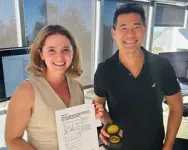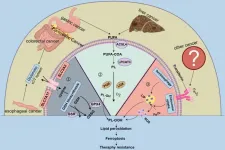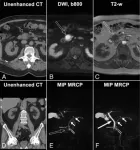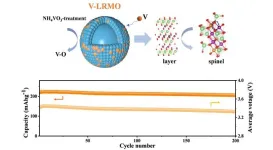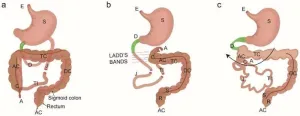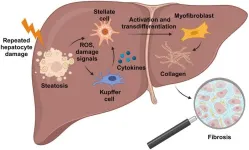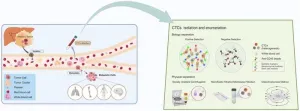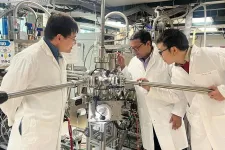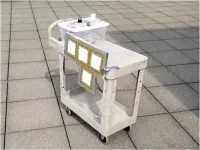(Press-News.org) Approximately 5,000 people in the U.S. develop amyotrophic lateral sclerosis (ALS) each year. On average, they survive for only two to five years after being diagnosed, according to the Centers for Disease Control and Prevention. The rapidly progressing neurodegenerative disease causes the death of neurons in the brain and spinal cord, resulting in muscle weakness, respiratory failure and dementia. Despite the devastating nature of the disease, little is known about what first triggers the deterioration of motor neurons at the onset of ALS.
Now, researchers from University of California San Diego and their colleagues report that they have identified a key pathway that sets off neurodegeneration in the early stages of the disease. The findings could lead to development of therapies to prevent or slow the progression of ALS early on, before major damage has been done. The study was published on October 31, 2024 in Neuron.
A protein called TDP-43 is usually located in the nucleus of motor neurons, where it regulates gene expression required for the cells to function. Studies have shown that when TDP-43 instead accumulates in the cytoplasm, outside of the nucleus, it is a telltale sign of ALS. How the protein ends up in the wrong place, leading to neuronal degeneration, has stumped researchers until now.
“By the time you see a patient with ALS and you see the TDP-43 protein aggregated in the cytoplasm, it's like the accident site with all the cars crashed already, but that's not the initiating event,” said corresponding author Gene Yeo, Ph.D., professor in the Department of Cellular and Molecular Medicine at UC San Diego School of Medicine and director of the Center for RNA Technologies and Therapeutics and the Sanford Stem Cell Institute Innovation Center.
Tracing the events leading up to the “accident”, Yeo explains that another protein, called CHMP7 — normally found in the cytoplasm — builds up in the nucleus instead, setting off a cascade of events that ultimately lead to motor neuron degeneration. But what causes CHMP7 to accumulate in the nucleus to begin with?
Yeo and his team screened for RNA-binding proteins that might influence CHMP7 build-up in the nucleus. This yielded 55 proteins, 23 of which had a potential connection to ALS pathogenesis. Inhibiting the production of several of these proteins led to an increase in CHMP7 in the nucleus. Further experiments with motor neurons created from ALS-patient-derived induced pluripotent stem cells resulted in the surprising discovery that depleting one of these, an RNA-splicing associated protein called SmD1, which had not previously been known to affect CHMP7 levels, led to the largest uptick in its nuclear accumulation.
A build-up of CHMP7 in the nucleus damages nucleoporins, which Yeo likens to tiny portals in the membrane separating the nucleus from the cytoplasm that orchestrate the movement of proteins and RNA between the two cellular spaces. Dysfunctional nucleoporins allow TDP-43 to exit the nucleus and accumulate in the cytoplasm. Once there, the protein can no longer oversee the gene expression programs necessary for neurons to function.
However, when the researchers boosted SmD1 expression in cells, CHMP7 was restored to its usual location in the cytoplasm, leaving nucleopores intact, allowing TDP-43 to stay in the nucleus, thus sparing the motor neurons from degeneration.
“You can actually fix the localization of this CHMP7 protein and therefore all of the downstream effects,” said Norah Al-Azzam, first author of the study, then a neurosciences student in the Yeo lab who went on to earn her Ph.D. in spring 2024.
What's more, the SmD1 protein is part of SMN, a multiprotein complex. SMN dysfunction is implicated in another neurodegenerative disorder, spinal muscular atrophy.
“We're intrigued because there are actually therapeutics for spinal muscular atrophy,” Yeo said. “One of them, risdiplam, is a small molecule compound that enhances the splicing and expression of SMN2, a gene closely related to the SMN1 gene that becomes dysfunctional in ALS.”
This hints at the possibility that using risdiplam to raise SMN levels could prevent ALS from developing past the earliest stage of the disease.
“It's not like all the neurons die at once,” said Yeo. “Some neurons die first, and then there is spread across other neurons. Perhaps as soon as you get symptoms, we could treat the patient so that the rest of the neurons don't crash and hope you stop the progression of ALS.”
The researchers think the SMN complex could play a crucial role in the onset of ALS, but further research is needed. The next steps will be to raise funds to continue the research in animal models and in other genetic models of ALS, and eventually test the effectiveness of risdiplam or other compounds for short-circuiting ALS.
Additional co-authors on the study include: Jenny H. To, Vaishali Gautam, Dylan C. Lam, Chloe B. Nguyen, Jack T. Naritomi, Assael A. Madrigal, Benjamin Lee, Anthony Avina, Orel Mizrahi, Jasmine R. Mueller, Willard Ford, Anthony Q. Vu, Steven M. Blue, Yashwin L. Madakamutil, Uri Manor, Cara R. Schiavon and Elena Rebollo, all at UC San Diego; Wenhao Jin at Sanford Laboratories for Innovative Medicines; Lena A. Street and Marko Jovanovic at Columbia University; Jeffrey D. Rothstein and Alyssa N. Coyne at Johns Hopkins University School of Medicine.
The study was funded, in part, by the National Institutes of Health (grants R01HG004659, U24 HG009889, R35GM128802, R01AG071869 and R01HG012216), the National Science Foundation (MCB-2224211), and the Chan-Zuckerberg Initiative.
Link to full study: https://doi.org/10.1016/j.neuron.2024.10.007
# # #
END
Key pathway leading to neurodegeneration in early stages of ALS identified
Findings point to potential for short-circuiting the progression of the fatal disease if diagnosed early.
2024-11-08
ELSE PRESS RELEASES FROM THIS DATE:
Ferroptosis in regulating treatment tolerance of digestive system tumors
2024-11-08
The global burden of digestive tract tumors is profound, with these cancers accounting for nearly half of all malignant tumors worldwide. Despite advancements in endoscopic diagnostic methods, which enable earlier detection and treatment, a large portion of patients still receive diagnoses at later stages. For these patients, chemotherapy, radiation, and immunotherapies are often the only viable options, yet resistance to treatment remains common, leading to high recurrence and mortality rates. Research increasingly shows that ferroptosis may be a key mechanism to reverse treatment tolerance. Ferroptosis, characterized by ...
A promising future in pancreatic incidentaloma detection
2024-11-08
In recent research published in eGastroenterology, Dr. J-Matthias Löhr and colleagues provide an in-depth review of diagnostic methods for pancreatic incidentaloma—incidental findings often detected during imaging scans intended for other conditions. These pancreatic lesions, which vary in severity, can occasionally signal pancreatic cancer in its earliest stages. However, traditional methods, including MRI and CT scans, are limited by invasiveness, cost, and variable sensitivity to early pancreatic changes.
The research highlights ...
Stabilizing lithium-ion batteries: The vanadium touch
2024-11-08
As demand surges for electric vehicles and energy storage systems, lithium-ion batteries need to deliver higher energy densities at lower costs. While conventional cathode materials like LiFePO4 and Li-Ni-Co-Mn-O are widely used, they often fail to balance performance with affordability. Lithium-rich manganese oxides (LRMOs) have emerged as a potential alternative due to their high capacity and cobalt-free composition. However, their low initial Coulombic efficiency and rapid voltage decay have limited their broader application. Addressing these challenges requires deeper research to stabilize LRMOs for widespread commercial use.
In September, 2024, a team from Guangdong University of Technology, ...
Innovative approaches to the surgical challenges in the management of gastroschisis
2024-11-08
Gastroschisis, a congenital abdominal wall defect, has transformed from a uniformly fatal condition to one with a 95% survival rate through surgical advancements over the past six decades. The primary goal of managing gastroschisis is to mitigate fetal and postnatal risks, including damage from herniated bowel loops and ensuring effective decompression of the gastrointestinal tract during recovery. This review focuses on both preventative and corrective aspects of gastroschisis management, highlighting innovations in neonatal surgery that improve quality of life and long-term health outcomes.
Definition ...
Mouse models for the study of liver fibrosis regression in vivo and ex vivo
2024-11-08
Liver fibrosis is a progressive and potentially reversible condition that results from chronic liver damage, which can be caused by a variety of factors, including metabolic dysfunction-associated steatotic liver disease (MASLD), alcohol abuse, and viral hepatitis. MASLD affects a significant portion of the global population and can progress to metabolic dysfunction-associated steatohepatitis (MASH), leading to liver cirrhosis if left untreated. Given the prevalence of MASLD and its related conditions, the study of fibrosis and its regression ...
At Fortune Global Forum 2024, Alex Zhavoronkov PhD, Founder and CEO of Insilico Medicine, discusses AI business potential
2024-11-08
From November 11 to 12, the Fortune Global Forum 2024, an invite-only premier event of Fortune, is set to gathers the leaders of the world’s biggest multinational companies on the dynamic frontiers of global business in New York, where business leaders from around the globe come together to create a modern roadmap for success.
Insilico Medicine(“Insilico”), a global leading generative artificial intelligence (AI)-driven biotechnology company, announces that Alex Zhavoronkov PhD, founder and CEO of Insilico Medicine will be attending the Fortune ...
Exploring circulating tumor cells: Detection methods and biomarkers for clinical evaluation in hepatocellular carcinoma
2024-11-08
Hepatocellular carcinoma (HCC) is a significant global health concern, particularly in regions like the Asia-Pacific, where chronic viral hepatitis and liver diseases contribute to its high incidence and mortality. Despite medical advancements, the late-stage diagnosis of HCC remains a major challenge, which underscores the need for more effective early detection strategies. Circulating tumor cells (CTCs), which are tumor cells released into the bloodstream from primary neoplastic sites, offer a promising avenue for non-invasive cancer diagnostics. This review provides a comprehensive overview of CTC detection methods, ...
New material to make next generation of electronics faster and more efficient
2024-11-08
MINNEAPOLIS / ST. PAUL (11/08/2024) — Researchers at the University of Minnesota have achieved a new material that will be pivotal in making the next generation of high-power electronics faster, transparent and more efficient. This artificially designed material allows electrons to move faster while remaining transparent to both visible and ultraviolet light, breaking the previous record.
The research, published in Science Advances, a peer-reviewed scientific journal, marks a significant leap forward in semiconductor ...
Research update: Chalk-coated textiles cool in urban environments
2024-11-08
As air temperatures stay elevated through fall months, people may still want clothes that cool them down while outside, especially if they live in cities that stay warmer than rural landscapes. Researchers who previously demonstrated a cooling fabric coating now report on additional tests of a treated polyester fabric in ACS Applied Materials & Interfaces. Fabric treated with the team’s chalk-based coating kept the air underneath up to 6 degrees Fahrenheit cooler in warmer urban environments.
Researchers Evan D. Patamia, Megan K. Yee and Trisha L. ...
New take on immunotherapy reinvigorates T cells by blocking uptake of energy-sapping cancer byproducts
2024-11-08
As cancer cells grow, they pump out metabolic byproducts such as lactic acid into the tumor microenvironment. Exhausted T cells — which have lost their cancer-fighting oomph — consume this lactic acid, which further saps their energy, according to new research from the University of Pittsburgh and UPMC Hillman Cancer Center.
When the researchers blocked the protein that imports lactic acid into cells, exhausted T cells gained a new lease on life, which led to improved tumor control in mouse models of cancer. The findings are published today in Nature Immunology.
“Blocking access to inhibitory metabolites is a completely new take on how we can reinvigorate ...
LAST 30 PRESS RELEASES:
Victoria’s Secret grant backs cutting-edge ovarian cancer research
Research paves the way for safer colonoscopy bowel prep for people with compromised gut health
JMIR Publications and Sweden's National Library announce renewal and expansion of flat-fee unlimited open access partnership for 2026
A new 3D-printed solar cell that’s transparent and color-tunable
IV iron is the cost-effective treatment for women with iron deficiency anemia and heavy menstrual bleeding
Doing good pays off: Environmentally and socially responsible companies drive value and market efficiency
City of Hope and Cellares to automate manufacturing of solid tumor CAR T cell therapy
Short-circuiting pancreatic cancer
Groundbreaking mapping: how many ghost particles all the Milky Way’s stars send towards Earth
JBNU researchers propose hierarchical porous copper nanosheet-based triboelectric nanogenerators
A high-protein diet can defeat cholera infection
A more accurate way of calculating the value of a healthy year of life
What causes some people’s gut microbes to produce high alcohol levels?
Global study reveals widespread burning of plastic for heating and cooking
MIT study shows pills that communicate from the stomach could improve medication adherence
Searching for the centromere: diversity in pathways key for cell division
Behind nature’s blueprints
Researchers search for why some people’s gut microbes produce high alcohol levels
Researchers find promising new way to boost the immune response to cancer
Coffee as a staining agent substitute in electron microscopy
Revealing the diversity of olfactory receptors in hagfish and its implications for early vertebrate evolution
Development of an ultrasonic sensor capable of cuffless, non-invasive blood pressure measurement
Longer treatment with medications for opioid use disorder is associated with greater probability of survival
Strategy over morality can help conservation campaigns reduce ivory demand, research shows
Rising temperatures reshape microbial carbon cycling during animal carcass decomposition in water
Achieving ultra-low-power explosive jumps via locust bio-hybrid muscle actuators
Plant-derived phenolic acids revive the power of tetracycline against drug-resistant bacteria
Cooperation: A costly affair in bacterial social behaviour?
Viruses in wastewater: Silent drivers of pollution removal and antibiotic resistance
Sub-iethal water disinfection may accelerate the spread of antibiotic resistance
[Press-News.org] Key pathway leading to neurodegeneration in early stages of ALS identifiedFindings point to potential for short-circuiting the progression of the fatal disease if diagnosed early.

